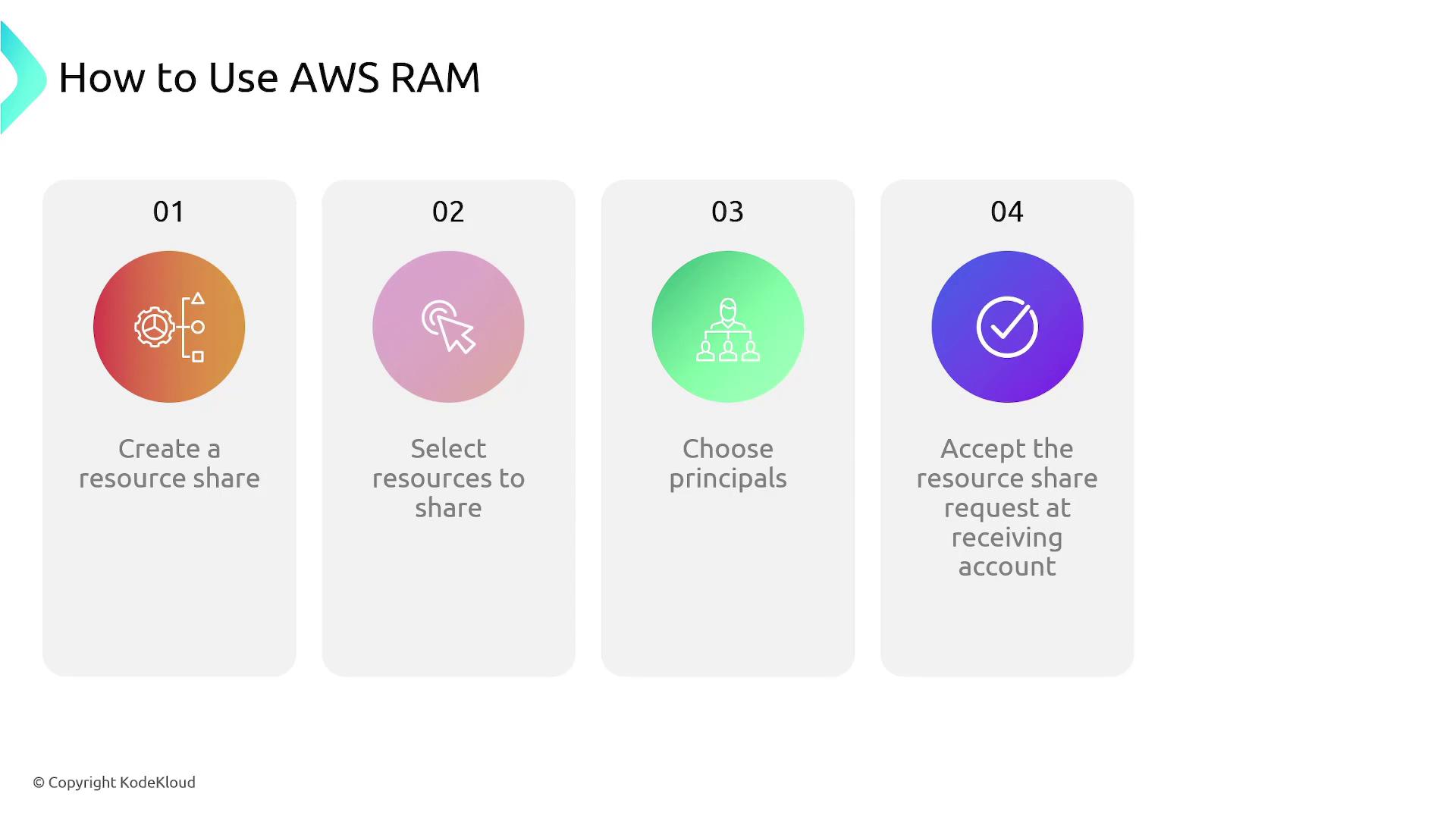AWS Solutions Architect Associate Certification
Services Management and Governance
Resource Access Manager
In this article, we explore AWS Resource Access Manager (AWS RAM), a service that simplifies the process of sharing AWS resources across multiple accounts. By leveraging AWS RAM, you can avoid creating duplicate resources, improve cost efficiency, and maintain a secure environment.
Key Use Cases
AWS RAM supports various resource sharing scenarios. For instance:
S3 Bucket Sharing:
When you create an S3 bucket in one account, you can share it with authorized accounts using AWS RAM. This allows collaborative access, where users can securely view, modify, or retrieve objects. Any changes made—such as adding or removing items—are reflected automatically across all accounts with access.Subnet Sharing:
If you create a subnet in one account, you can share it with other accounts. The recipient accounts can then deploy EC2 instances into the shared subnet, even though the physical infrastructure remains in the provider's account. This capability streamlines operations in multi-account AWS environments.
Before AWS RAM, organizations often faced challenges such as fragmented resources—including VPCs, Transit Gateways, and subnets—spread across numerous accounts. This fragmentation led to increased costs, inefficiencies, and complex IAM policy configurations. Additionally, establishing complex network configurations like VPC peering or VPN connections was necessary to share resources, further complicating management and troubleshooting.
Security Consideration
Ensure that IAM policies are meticulously configured when sharing resources to avoid potential security vulnerabilities. Misconfigurations can lead to unauthorized access or data breaches.
How AWS RAM Works
The process to share resources with AWS RAM is straightforward:
Create a Resource:
Begin by creating the resource in your AWS account.Select the Resource:
Identify the resource you wish to share.Choose Principals:
Specify the AWS accounts (principals) with which you want to share the resource.Accept the Share:
On the recipient account, accept the resource share to gain access.

Once the resource share is established, you can continuously monitor, manage, or revoke access as needed.
For more detailed information on managing AWS resources, refer to the AWS Documentation.
Note
AWS RAM not only simplifies resource sharing but also enhances collaboration among different teams by centralizing resource management. This makes it an essential tool for enterprises with multi-account AWS environments.
Watch Video
Watch video content